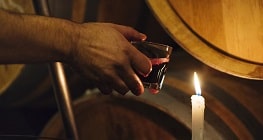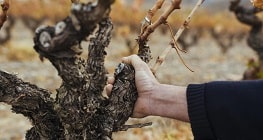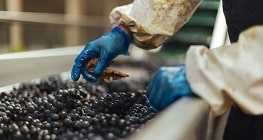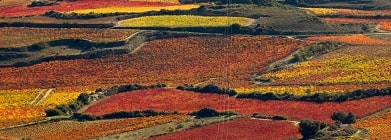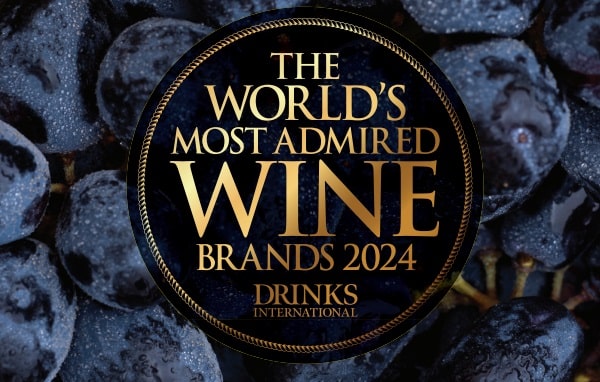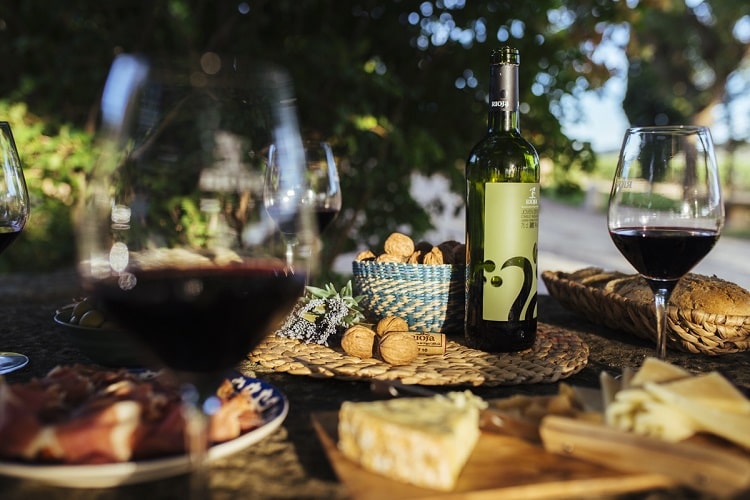By Shay Waterworth, From Drinks International
Shay Waterworth investigates the potential for Rioja blanco as consumer tastes swing towards lighter styles and climate change means bringing in different grape varieties.
According to the International Organisation of Vine & Wine, global wine consumption was down for a third year in a row in 2021 despite overall production increasing. Breaking it down we see a falling appetite among younger consumers for richer, full-bodied red wines and a growth in lighter styles such as rosé, sparkling and whites. To many traditional red wine regions alarm bells are ringing, but in Spain Rioja is well positioned to adapt.
The denomination has seen the popularity of its red wines soar since it was awarded Denominación de Origen Calificada in 1991, but now this demand for white wines is planting a significant fork in the road for many top producers.
Traditionally, the Rioja region was, in fact, known for its white wines and it wasn’t until the mid-1800s that a severe phylloxera epidemic in Europe caused a change. The louse ravaged French vineyards and saw winemakers relocate to Rioja to make similar-style wines, leading to a revolution of red wines. Today, the region is a major player in the world of reds, but according to Rodolpho Bastida, head winemaker at Ramón Bilbao, the quality of Rioja’s traditional whites was high.
“If you look at the historical results of wine competitions from the 1800s, the region was producing excellent white wines and it was by far more popular than reds from Rioja,” says Bastida. “But over time this changed and influences from other regions put red wines in more demand.”

Rioja blanco today
According to Rioja’s Consejo Regulador, production of white Rioja accounted for just shy of 10% of the total volume in 2021, compared to around 5% in 2012. The area of white grape varieties planted in the region has also increased by almost 50% since 2015. In the UK, which remains one of Rioja’s major markets, sales of white Rioja have grown steadily, up from 8.7% in 2019 to 9.6% in 2021 according to a report by Harpers Wine & Spirit late last year. In terms of volume, the region produced 24 million litres of white wine, up from 21 million in 2018.
These numbers sound impressive, but it’s important to remember the vast scale of red Rioja wine compared to its white counterpart. On the surface this could look like a random fluctuation, but one telling sign that white Rioja’s a serious trend is that the major players are taking note – and in some cases acting.
According to the same Harpers report, the Rioja region is looking to increase the value of its white wines by 23% to 2025 and in 2021 CVNE introduced Monopole Clásico Gran Reserva, a style recently revived by the brand after it was first introduced in 1905. “CVNE discontinued Monopole in the late 1900s, as consumer preferences realigned towards more ‘pure’ and fresh styles,” says CVNE chief executive Victor Urrutia. “But classical Rioja white is back in vogue again – after tasting an old bottle from the 1970s, we decided to reboot Monopole and release the 2014 as a Gran Reserva.”
Bastida adds: “It’s true that white wines from the DO are growing faster than reds. Consumers are more and more enjoying lighter salads than rich red meats, but I think that Rioja is often slow to make decisions. That’s why the focus for our white wines from Spain is still largely in other regions such as Rueda. But in Rioja we have a white wine in the north of the appellation on a single plot at 600m altitude, where we grow Tempranillo Blanco and Maturana Blanca. The plot is right at the edge of the appellation so you see vines turn into fields growing cereals, and actually a lot of these plots made wine in the past but no longer sit inside the DO – personally I think they should be reintroduced because the quality is definitely there.”
Faustino is top of the pile when it comes to market presence for Rioja. Currently sitting in The World’s Most Admired Wines list, alongside Ramón Bilbao, Faustino is the biggest exporter of Rioja reds – yet it has four Rioja blanco wines in its portfolio.
Francisco Honrubia, director general at Faustino, tells Drinks International: “The sales of white Rioja are increasing a lot and therefore we will be producing the maximum amount we can. I believe the last report from the DO Rioja says that we’ve grown around 25% on last year for white Rioja.
“Maybe 10 years ago not many people even knew Rioja made white wine and even now it’s not common knowledge, but this perception is changing. I think in the near future there will be some hectares that will be transformed from producing reds to producing whites, and it would be a clever decision for winegrowers to take. Ourselves, we’re increasing the production of our white wines but we’re also trying to develop new categories of white. We’re going for white reservas and grand reservas and in the future we see ourselves having the biggest portfolio of white wines in Rioja.”

Exports remain key
In the earlier report by Harpers it was noted that overall export figures of Rioja in 2022 were “not looking great overall”, while whites were healthy with the first nine months of the year up 10% on 2021. Faustino is the biggest exporter of Rioja.
Honrubia adds: “In theory we would go to the same markets with our white wines as our reds, but it’s not so simple. For example, the UK is our biggest market for red wine but I don’t think they’re following the trend towards white wines as much as maybe central European countries like Germany, Belgium and The Netherlands. In the US there’s a growing recognition for white Rioja, especially reservas and grand reservas. In the majority of markets where white wine is popular it’s associated with lighter styles for refreshment, whereas with Rioja we can offer much more than just quenching a thirst but actually offering complex wines.
“In my opinion, Rioja is the best in the world at ageing red wines, so now it’s time to use this expertise to develop the whites in the region also. There’s no point in trying to compete with, say, Pinot Grigio from the New World – instead we need to express ourselves and create that identity.”
Pedro Ballesteros MW summed up this identity of Rioja blanco for Decanter. “White wines, mostly those fermented and aged in oak, are a particular focus,” he says. “The wine trade and drinkers alike are talking enthusiastically about these wines, which develop a lot of complexity after years in bottle. On top of that, grape varieties that were authorised a few years ago are now demonstrating their contribution to Rioja’s quality panoply. Maturana Blanca, Tempranillo and various clones of Malvasía are behind some of the great new Rioja whites.”

Climate change
As producers begin to turn their attention to Rioja blanco with a vision of future growth, they must plan ahead for the inevitable increase in temperatures.
Honrubia adds: “We’re trying to implement the new varieties into our white wines which were recently allowed by the DO, such as Verdejo, Sauvignon Blanc and Chardonnay. Viura, the largest variety in the region, is adapting well to the new weather conditions. But winegrowers are beginning to investigate how to develop Viura and Chardonnay in the DO and our team are doing that right now.
“Typically, white wines are more robust than red varieties when it comes to weather conditions, so I think producers are starting to realise this as a potential way to navigate through the rising temperatures. People may be starting to regret not planting white varieties 10 years ago because now I think we’re very close to reaching a point where white grapes are more expensive to buy than red.”
As Honrubia mentioned earlier, there’s a real thirst for white wines with complexity, but in a report by James Lawrence for Wine Searcher, Jose Urtasun, owner of Remirez de Ganuza, believes the key to Rioja blanco’s future success is to maintain quality.
“As has happened many times before, we will fail if the trend is only driven by the demand,” says Urtasun. “We have to make sure that we increase not only the volume exported, but the quality and prestige of the wines and the region as well. If we overly rely on young vineyards, we will produce poor wines and stifle demand. This has to be done properly.”
It’s safe to say Rioja blanco has its followers, a cult-size style right now, but all signs are pointing towards continued growth. It’s unlikely we’ll return to the 1850s when white Rioja was the dominant Spanish wine, but it ought to demand a bigger portion of the market space – should brands build on the reputation for quality rather than releasing young, cheaper wines to satisfy the early demand.
Honrubia concludes: “Of course, while it all sounds very promising, we’re still working off a small basis so we need another five or six years to really expand to where the category can get to.”


